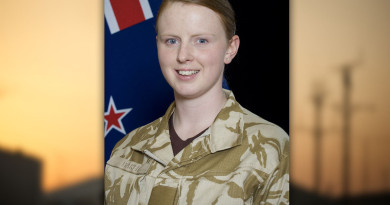Battle Group Eagle swoops

Distinctive red-and-white shemaghs and blue baseball caps gave away the “enemy” soldiers scattered in defensive positions around a town under their control.
CAPTION: An Australian Army M1A1 Abrams tank from the 2nd Cavalry Regiment moves forward in a simulated attack serial held at the Townsville Field Training Area as part of Exercise Talisman Sabre. Story by Warrant Officer Class 2 Max Bree. Photo by Corporal Brandon Grey.
Heavy machine guns being fired from less than a kilometre away shattered the serenity.
An enemy soldier yelled “tanks east” before shots were fired from the cannons of the enemy’s infantry fighting vehicles (IFV).
Adjudicators took their positions to determine the casualties for the scenario held as part of Exercise Talisman Sabre (TS21) at Townsville Field Training Area’s urban operations facility.
Shots were then fired on the enemy across a clearing from a force of 10 tanks from Battle Group Eagle.
Some enemy IFVs were destroyed, others were suppressed, allowing three United States Marine Corps (USMC) MV-22 Ospreys to land additional Marines nearby.
Suppressive fire from the M1A1 Abrams main battle tank kept enemy heads down as more tanks crossed open ground followed by Marines in assault formation.
Tensions escalated as actors playing town residents were threatened unless the attack stopped – all to no avail.
Some tanks were marked by the adjudicators as destroyed, but the rest pushed to the town outskirts and over barbed-wire obstacles.

CAPTION: Australian Army Sapper Guy Phillips, right, of the 3rd Combat Engineer Regiment, alongside a US Marine during a clearance of an enemy stronghold at the Townsville Field Training Area. Photo by Corporal Brandon Grey.
Seeing things unfold from an Abrams was 2nd Cavalry Regiment’s Lieutenant Joshua Shorter, commander of the tank troop with the call sign Tango 32.
“An urban break-in can be quite complicated, but a tank is able to reduce the obstacles,” Lieutenant Shorter said.
“That can minimise the time infantry spend in the open on the approach and their break-in can occur earlier.”
Lieutenant Shorter said he would not want to be on the other end of so many tanks with their 120mm main guns being fired.
“That shock action has a large effect on the enemy morale. They are shaken and ready to be assaulted by the ground forces,” he said.
The enemy fell back from the town’s outer buildings just before the marines entered.
“This door is booby trapped”, one Marine yelled before he called forward the Australian Army Explosive Ordnance Disposal (EOD) team attached with his platoon.
One EOD technician was Corporal Philip Rutherford, who had been attached to the US Marines just before the battle.
“At the line of departure, we met up with our platoons and said, ‘tell us where you want EOD and we’ll be there with bells and whistles on to get the job done’,” Corporal Rutherford said.

CAPTION: US Marines and Australian Army soldiers during a simulated urban assault held at the Townsville Field Training Area. Photo by Warrant Officer Class 2 Max Bree.
More enemy vehicles were destroyed ahead of the Marines, who moved into the town centre to clear the main buildings.
House-to-house fighting broke out on the town’s western section as protracted gun battles ensued.
Australian M113AS4 armoured personnel carriers arrived to load wounded US Marines from a large building that had become a makeshift company headquarters.
Chatter over US Marine radios gave commentary on the last clearances.
“Three buildings remaining. Two buildings remaining.”
The assault force of 180 Marines was from Animal Company, 1st Battalion, 7th Marine Regiment, commanded by Major Joseph Carroll.
While his rifle company featured many infantrymen, Major Carroll said it didn’t have heavy assets.
“Urban is infantry’s bread-and-butter but if you add tanks into that, it’s a game-winner,” he said.
“They bring a tremendous amount of heavy and medium machine gun ammo to suppress [enemies in] buildings.
“That main gun can destroy buildings or at least make sure anyone in there is concussed as we make entry.”
His US Marine company was attached to Australia’s Battle Group Eagle, which also facilitated things such as rations, water, transport and a swap of liaison officers.
Having secured the town, Marines entered defensive positions then checked ammo and equipment.
Lieutenant Shorter and the tanks occupied a northern guard position to prevent a possible counter-attack.
“The US Marines were timely, professional and their assault was aggressive and fast,” he said.
“From what I could hear, the cross-talk between them and us was excellent for coordinating the assault.”
.
.

.
.





